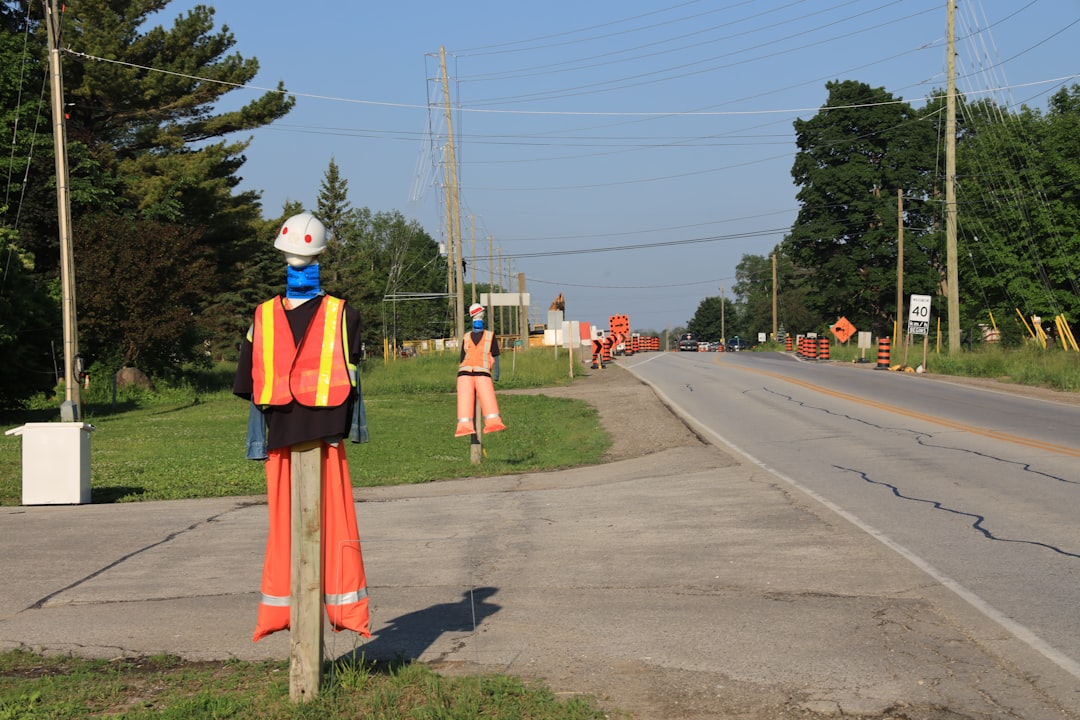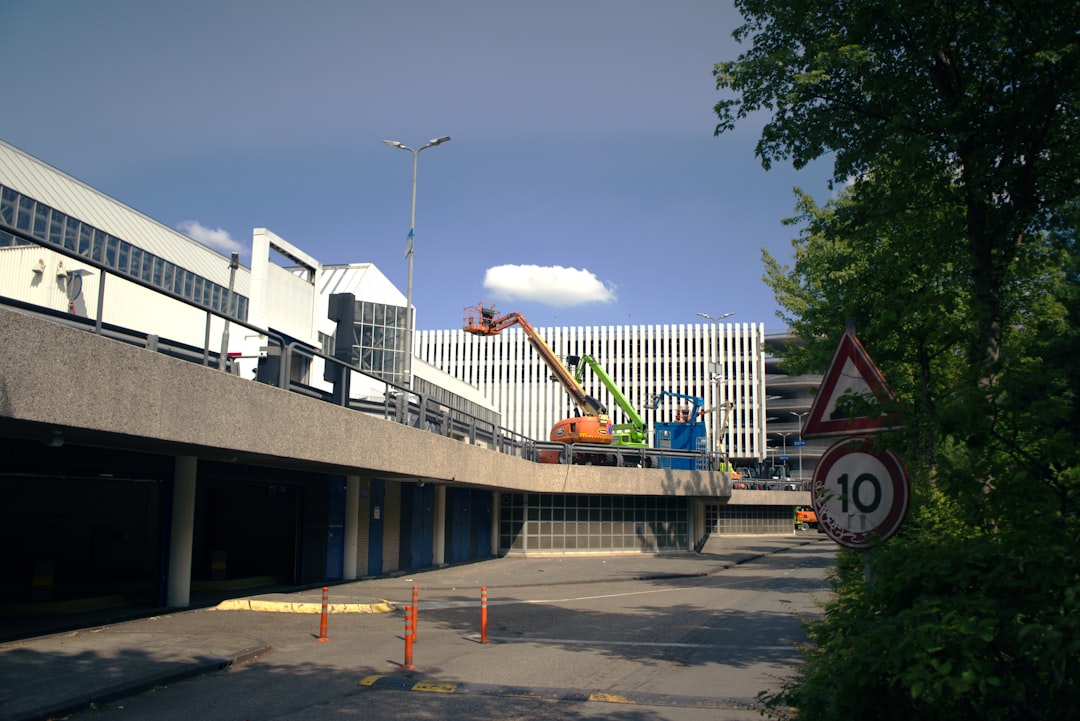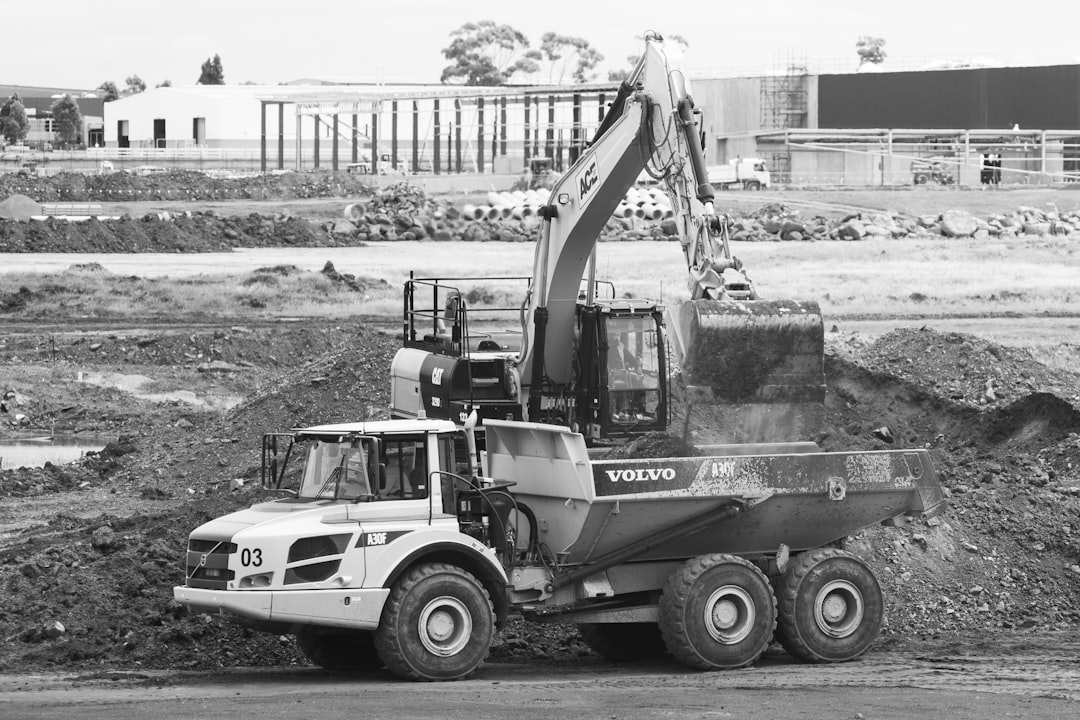

Engage prospects with a scan and streamline customer engagement with FREE QR code marketing tools by Sona – no strings attached!
Create a Free QR CodeFree consultation

No commitment

Engage prospects with a scan and streamline customer engagement with FREE QR code marketing tools by Sona – no strings attached!
Create a Free QR CodeFree consultation

No commitment
The construction landscape is rapidly evolving, and gravel driveway construction services are no exception. Despite heavy investments in high-visibility assets like signage, yard banners, and branded equipment, many teams still struggle with a disconnect that limits their ability to track and capture high-value prospects, particularly those who do not immediately submit a contact form or call after seeing offline marketing. When these anonymous but interested consumers slip through the cracks because their interactions are not tracked or tied to a CRM, it results in missed opportunities and uncertain return on marketing spend.
The journey from offline exposure to actionable digital engagement is often inefficient. Traditional print-only workflows such as distributing flyers, relying on static business cards, or placing untraceable jobsite signs create friction and leave construction firms in the dark about who is truly interested. This lack of visibility means companies are left guessing which marketing assets prompt homeowner inquiries or commercial project leads, restricting follow-up and complicating efforts to justify spend. These challenges are heightened by delayed or incomplete lead capture, as waiting for prospects to self-identify can allow competitors to move in first.
Modern QR code solutions have emerged as a bridge for gravel driveway contractors, connecting physical marketing directly to digital content and tools with a single scan, no app required. When strategically deployed, QR codes enable faster lead qualification, real-time sharing of educational content like before-and-after project photos, and delivery of personalized offers, while also capturing valuable behavioral data at the very moment of interest. To accelerate this shift, see how Sona QR product overview supports scan analytics and CRM workflows and why it’s smart to update your QR strategy. By adopting QR strategies designed for high-touch construction services, providers can uncover previously anonymous traffic, create segmented audiences for retargeting, and, crucially, tie each touchpoint, whether a yard sign or mailer, back to actual revenue.

Many construction teams notice a recurring problem: high-value leads that see offline signage or equipment remain anonymous and untracked, resulting in missed opportunities for project quotes or follow-up engagement. Traditional processes such as handing out flyers or relying solely on branded trucks do not capture which prospects are taking the next step, and early signals of purchase intent often go unnoticed. In gravel driveway work, where local visibility is strong and decision timelines can be short, that gap becomes expensive.
QR codes can solve this by instantly connecting interested homeowners, property managers, or commercial clients to digital quote forms, educational galleries, or booking tools. This modern approach allows teams to record every interaction, making it far easier to identify and follow up with the right audience at the peak of their interest. Delays in lead capture, such as waiting for a phone call or manual web form submission, give competitors a window to act first. With QR-powered workflows, lead details are captured and routed automatically, shrinking response times and boosting win rates.
By replacing outdated paper processes with trackable QR experiences, gravel driveway providers can streamline lead capture, react quickly to buyer interest, and reduce lost opportunities, all while gathering valuable attribution data for every campaign touchpoint. The result is a measurable uptick in quote requests, shorter response times, and a pipeline that reflects real intent, not assumptions.

In the gravel driveway space, physical presence, yard signs, door hangers, and fleet branding remains a core marketing channel. Yet too often, the gap between in-person exposure and digital conversion goes unaddressed. For many contractors, the inability to identify who is engaging with their signage means qualified local prospects slip by without a timely follow-up. When homeowners stroll past an active installation and think, “We need our driveway redone this spring,” you want that thought to become an immediate, measurable action. For industry context, see how QR adoption impacts field services in this overview of QR codes in construction.
The result of leaving that gap open is a double challenge: not only are you missing out on prospects who may be ready to act, but you also lack the data to measure which campaigns influence outcomes. This lack of visibility complicates everything from sales forecasting to route planning for estimates. It also makes it harder to justify spend on high-cost items like vehicle wraps or premium yard signs because you cannot attribute scans and leads to revenue.
QR codes provide a natural solution by eliminating the silos between physical and digital channels. With one scan, prospects can:
Advanced QR tools make it possible to prioritize follow-up with high-fit leads, refresh offers without reprinting materials, and deliver self-serve content that empowers buyers. Explore deployment ideas in Sona QR’s use cases, a practical library for connecting print to digital.

Selecting the right QR code format is crucial for solving specific operational challenges. Contact details are often misplaced after jobsite visits, while paper feedback forms go underused due to hassle. Well-chosen QR formats reduce friction and keep your pipeline clean.
Dynamic codes offer flexibility to update destinations based on scan patterns, helping contractors zero in on what drives conversions. By managing code generation from a centralized dashboard such as Sona QR, teams can switch out a landing page when weather changes affect scheduling, test different CTAs by neighborhood, and preserve continuity for printed assets that remain in the field for months.

Gravel driveway contractors frequently overlook dozens of high-impact touchpoints where QR integration can unlock new pipeline and reduce missed leads. The goal is to meet people where they are and remove steps between curiosity and action.
By systematically deploying QR codes at these touchpoints, construction companies can measure which physical assets truly drive engagement and allocate resources accordingly. Instead of guessing which signs work, you will know it, and you can double down on the best placements and messages.

Use Case 1: Onsite yard signs. When prospects drive by a live installation or a recently completed driveway, a QR code offers instant options for a custom cost estimate or for exploring gravel types. This replaces the common pain point of waiting for a form submission or a phone inquiry. It allows contractors to surface buyer intent in real time, prioritize outreach, and improve lead-to-quote ratios. Pair the sign with a targeted CTA such as “Scan to see cost for your address,” which pre-fills the neighborhood in the form and increases completion rates.
Use Case 2: Direct mail campaigns. Rather than guessing if mailers are discarded, unique QR links direct recipients to a “Gravel vs. asphalt vs. concrete” comparison tool, along with an easy scheduling form. The tool educates buyers on drainage, freeze-thaw durability, and maintenance, which reframes the conversation away from price only. This reduces friction for price shoppers, differentiates your offering, and directly attributes each response to a specific print asset and route.
Use Case 3: Project completion stickers. At project close-out, placement of a QR-powered sticker on a garage wall or in a welcome packet leads customers to a maintenance tips video and a referral program. This approach proactively surfaces upsell opportunities such as edging, resealing, or drainage enhancements. It makes it simple for satisfied clients to promote your work to neighbors, while providing post-installation care resources that reduce churn and callbacks. Add a one-tap review link using a Google reviews QR.
Each use case transforms everyday offline interactions into a measurable and repeatable channel for capturing and converting high-fit leads. The more intentional you are about the destination content, the stronger the lift in engagement and conversion.
A major challenge for gravel driveway businesses is the inability to segment audiences by intent or readiness to buy, especially when physical marketing generates only anonymous interest. Each QR scan can serve as a powerful intent signal that supports smarter retargeting and personalization across the customer journey. With the right tags, you can distinguish between a homeowner comparing materials and a property manager seeking a multi-driveway bid.
By assigning scan tags such as project size, gravel category, or sustainability interest, contractors can build segmented audiences for tailored follow-up through email sequences, SMS updates, sales callbacks, or targeted ads. For paid follow-up tactics, see Sona’s Playbook Intent-Driven Retargeting. With Sona QR, you can automate the sync and trigger workflows that match the scan context, so your team focuses on high-value conversations instead of manual sorting. For nurture execution, explore emails as a lightweight next step.
Relying on a single marketing channel limits your insight and impact, especially when physical assets are not tracked. QR codes act as connective tissue that links every touchpoint to a unified, measurable campaign. When print, social, events, and jobsite visibility are connected, attribution improves and your cost per quote typically drops.
Each scan can feed into automated workflows such as maintenance reminders, referral invitations, and upsell prompts. With a centralized platform like Sona QR, you can manage all codes, monitor performance by channel, and sync scan data with your CRM. This creates a connected customer experience that moves people from awareness to consultation with fewer drop-offs.
Start with a clear objective. Decide whether your goal is to drive quote requests, educate on materials, build your photo portfolio, or capture referrals. For example, highlight pain points with a message tailored to the moment of interest: “Get your gravel driveway installation cost estimate.” Place this on yard signs to engage passersby who might otherwise remain anonymous and move on without contacting you.
Prioritize use cases that tie directly to revenue or that remove a major friction point. If your crew receives frequent calls that do not convert due to unclear expectations, build a QR experience that offers a transparent pricing range and a next-step booking calendar. If your calendars fill unevenly across the week, use QR to feed an automated scheduler with time slot incentives.
Choose dynamic or static based on flexibility needs. Dynamic QR codes are trackable and editable. They are essential for campaigns where you will update the destination or test different offers over time. Static QR codes work best for permanent assets such as warranty registration or evergreen contact info. For most marketing, dynamic will deliver superior insight and long-term value.
Consider the format based on the action you want. Web link QRs are ideal for estimates and galleries. vCards are perfect for contact handoffs. SMS and email link QRs reduce effort for change requests or referrals. Using Sona QR, you can manage these types in one place and route each scan to the right workflow without rebuilding your materials.
Your QR code must be scannable at a glance and communicate a clear benefit. Leverage attention-grabbing visuals, color contrast, and action-oriented CTAs such as “Scan for maintenance tips” or “Scan to see gravel options.” Frame the code with a border and include a short headline that sets expectations. If the code is on a moving vehicle, prioritize size and high-contrast placement. For layout inspiration and dos and don’ts, review these QR best practices.
Test usability in realistic conditions. Check distance, angle, glare, and lighting, especially for jobsite and road-facing signs. Verify scan success across common devices and camera apps. Use error correction settings that balance resilience with readability. Ensure the destination page is mobile optimized, loads quickly, and requires minimal typing.
Begin with the highest-visibility assets such as yard signage, supply store flyers, and equipment decals. These placements capture curiosity where it is strongest: at the curb, in the store, and on the street. Build a deployment calendar to roll out new codes in waves, so you can learn and iterate without overwhelming your team.
Expand based on scan analytics. If you see strong performance in a specific neighborhood, deploy additional signs with refined CTAs that speak to local concerns such as winter durability or erosion control. If trade show scans convert to quotes at a higher rate, scale up booth signage and pre-schedule post-event follow-ups triggered by the scan.
Use analytics to publish learnings for your team and to guide budget allocation. Do not stop at scan volume. Compare scan-to-lead and lead-to-quote rates by placement, message, and creative. Map scans back to project bookings or after-service touchpoints to validate true ROI. Use these insights to refine CTAs, landing pages, and code designs.
Run A/B tests routinely. Try two CTAs on similar yard signs and rotate placements every week. Optimize landing pages for the fewest fields required for a callback. Sync scan events into your CRM with Sona QR so that each scan can trigger a workflow, such as an instant text follow-up or a scheduler link. The faster you respond, the higher your close rate. For measurement models, see Sona’s blog post Single vs Multi-Touch Attribution Models.
A persistent difficulty in gravel driveway marketing is attributing physical impressions, such as drive-bys or handouts, to actual new business. Without attribution, it is challenging to prove campaign effectiveness and secure budget. For a framework to connect offline scans to results, read Sona’s Essential Guide to Offline Attribution. QR tracking connects every scan to real outcomes, providing a closed-loop view of which assets and messages move the needle.
With Sona QR and Sona.com, gravel driveway teams can unify fragmented touchpoints across buying stages and connect scans to revenue with identity resolution and multi-touch attribution. Sona QR captures real-world engagement and syncs it to your CRM. Sona.com gives you buyer journey visibility that links QR scans with website visits, ad clicks, emails, and sales activity. That end-to-end view lets you spend smarter and prove impact with confidence.
Creative deployment ideas include adding a QR code to invoices to encourage maintenance plan enrollment, or placing a scannable referral card in a homeowner’s welcome folder that shares a neighbor discount. For niche marketing ideas tailored to this trade, consider these driveway contractor marketing strategies.
QR codes are swiftly becoming a differentiator for gravel driveway construction services, addressing long-standing pain points like anonymous traffic, delayed lead capture, and opaque attribution. By embedding QR strategies into every phase of the client journey, from jobsite visibility through post-service engagement, contractors can deliver rich, instant content at the moment prospects show real intent. This integration bridges the physical-digital divide, accelerates pipeline growth, and ties offline marketing to measurable revenue, so every marketing dollar works harder.
Gravel driveway construction services that embrace QR code technology are poised to solve critical challenges around lead visibility and timely prospect engagement. By deploying QR codes thoughtfully at each client touchpoint and pairing them with platforms such as Sona QR and Sona.com, firms can move beyond lost opportunities and guesswork. The outcome is a smarter, faster funnel with clear attribution, higher quote volume, and a sustained advantage in delivering measurable client value. Start creating QR codes for free.
QR codes have revolutionized gravel driveway construction services by transforming traditional project management and customer communication into seamless, data-driven interactions. They enable contractors to provide instant access to project details, maintenance tips, and service updates, enhancing client trust and satisfaction while streamlining operations. Imagine effortlessly tracking each client interaction and knowing exactly which information boosts customer retention and referrals.
With Sona QR, you can create dynamic, trackable QR codes in seconds that update instantly—no need to reprint materials as projects evolve. Connect every scan to meaningful insights that help optimize your service delivery and grow your business. Start for free with Sona QR today and turn every scan into stronger relationships and more profitable opportunities.
The article does not specify exact costs to build a gravel driveway but suggests using QR codes to access estimate requests and pricing information instantly.
Gravel driveways offer benefits such as drainage, freeze-thaw durability, and easier maintenance, which can be compared using tools linked via QR codes to educate buyers beyond price considerations.
The article does not provide specific information on the lifespan of gravel driveways.
Best practices include providing maintenance tips via QR codes on project completion stickers or flyers, offering guidance on edging, resealing, drainage enhancements, and seasonal care reminders through automated follow-ups.
Choose a service that uses modern marketing tools like QR codes to provide instant estimates, educational content, and timely follow-up, ensuring transparency, responsiveness, and measurable engagement.
QR codes connect offline marketing such as yard signs and flyers directly to digital quote forms and educational content, enabling instant lead capture, real-time data collection, and faster follow-up that increases quote requests.
Effective QR code types include web link codes for estimates and galleries, vCard codes for contact sharing, form codes for quote requests, image or video gallery codes for showcasing work, and SMS or email link codes for quick communication.
Place QR codes on yard signs at active or completed projects, brochures, direct mailers, equipment decals, branded gear, and event materials to capture interest across multiple high-visibility touchpoints.
Contractors track scan-to-lead and lead-to-quote conversion rates by location and asset type, use segmentation to tailor follow-up, run A/B tests on CTAs, and adjust placements based on performance data to improve ROI.
Steps include choosing a clear use case, selecting the appropriate QR code type, designing and testing the code for scannability, deploying codes on key assets, and tracking analytics to optimize performance continuously.
QR codes bridge the gap between physical ads and digital engagement by enabling instant access to quote forms, galleries, and educational content, while tracking user behavior to attribute leads and revenue accurately.
CRM integration automates lead nurturing, schedules callbacks, triggers workflows based on QR scan context, enriches pipelines, and provides sales teams with the full customer journey for efficient follow-up.
By tagging scans with intent signals and audience details, companies can segment prospects by interest stage and preferences, enabling personalized retargeting through email, SMS, calls, or ads for higher conversion.
Use unique codes per asset, layer UTM parameters for detailed attribution, automate follow-ups triggered by scans, train staff to promote QR scanning, and integrate scan data with CRM for seamless lead management.
Use Sona QR's trackable codes to improve customer acquisition and engagement today.
Create Your FREE Trackable QR Code in SecondsJoin results-focused teams combining Sona Platform automation with advanced Google Ads strategies to scale lead generation

Connect your existing CRM

Free Account Enrichment

No setup fees
No commitment required

Free consultation

Get a custom Google Ads roadmap for your business






Launch campaigns that generate qualified leads in 30 days or less.
